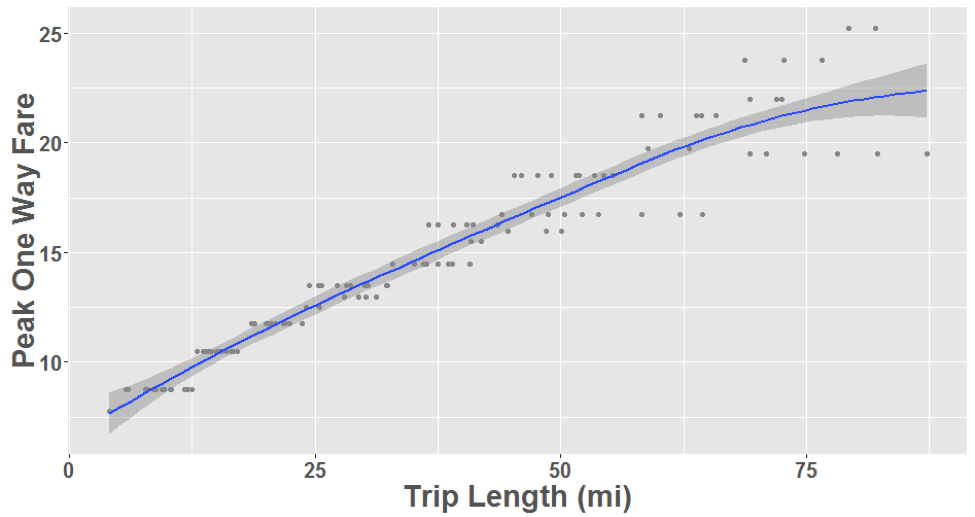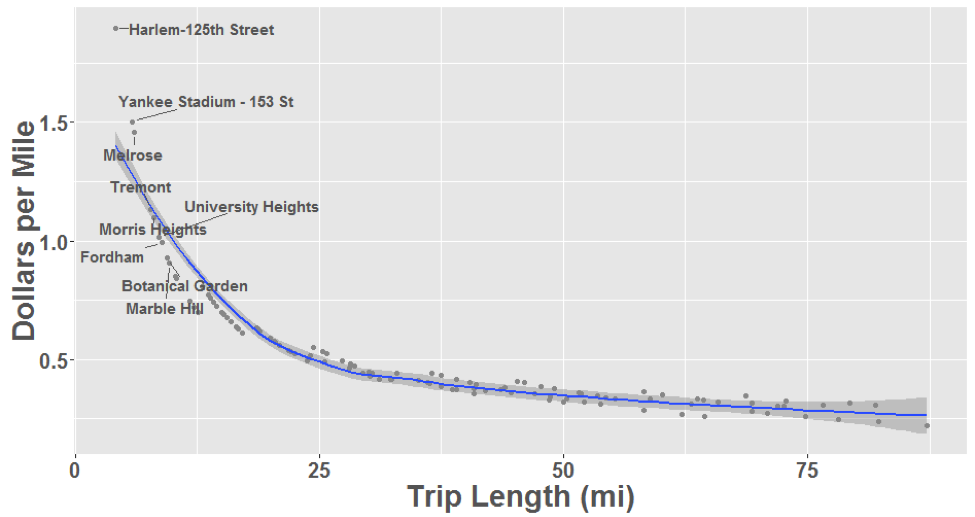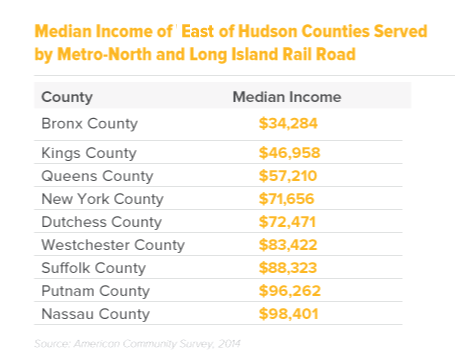The New York region benefits from an extensive commuter rail network. But despite the convenience of these rail lines in the Bronx, Queens and Brooklyn, new RPA analysis suggests that fare pricing could be steering New York City’s commuters away from speedy commuter rail service.
In our work on the Fourth Regional Plan, A Region Transformed, we’ve been exploring where our current transit system falls short, especially for outer-borough commuters like those in the Bronx. RPA is not only evaluating how new rail service or bus routes might address current gaps in the system, but is also taking into consideration the ways that our existing infrastructure can better meet the region’s needs through policy changes.
Take fare policy. As part of our research on the region’s commuter rail system, we have been scrutinizing the relationship between commuter rail fares and trip distance.
As shown in the chart below, the price of a peak one way ticket on Metro-North to Grand Central is strongly correlated with the distance from Grand Central to the station the ticket was purchased for. It makes sense that you would pay more the further you travel. Taken at face value, this correlation implies that riders at stations such as the Bronx’s Morris Heights and Tremont are the beneficiaries of this system. But the picture changes dramatically when we look at the price per mile paid by the commuter.

The second chart shows how price per mile varies by trip length and the relationship between price and distance traveled has clearly changed from positive to negative. That is, as you increase your trip length you pay less per mile for each additional mile you travel. Again, this makes sense because as the railroad provides you with more of a service, in this case the length of your trip, it can afford to do so at a lower marginal cost because of the economies of scale related to running a railroad (e.g. labor and fuel costs). While this is true, examining which stations pay the most per mile suggests there may be unintended consequences of this pricing model.

Specifically, the Metro-North stations that pay the highest price per mile are all within the Bronx. In a study RPA released last year looking at gaps in the city’s transit system, we found many communities in the outer boroughs, including the Bronx, don’t have easily accessible or speedy transit options. Moreover, many of these communities have lower median incomes, making these higher prices seem even further out of reach for the average commuter. Is it any wonder then that we see lower levels of commuter rail ridership at these stations despite being located in places with fewer subway stations and longer bus or subway travel times?

As evidenced in this interactive below, we see a similar conclusion when repeated for Long Island Rail Road peak one way tickets to Penn Station.
It’s likely that the current pricing structure for our commuter rail systems along with other usability issues, such as low non-peak service frequencies, is preventing outer borough residents from using transit lines that in some cases pass through their backyards. Solving the complex equity questions raised by this analysis is a challenging task, but the MTA has begun to tackle them with the implementation of the City Ticket program and the recent announcement of additional service on the Harlem Line. Solutions to questions like these are what we hope to provide with the Fourth Regional Plan.
Photo: Benjamin Kabak
